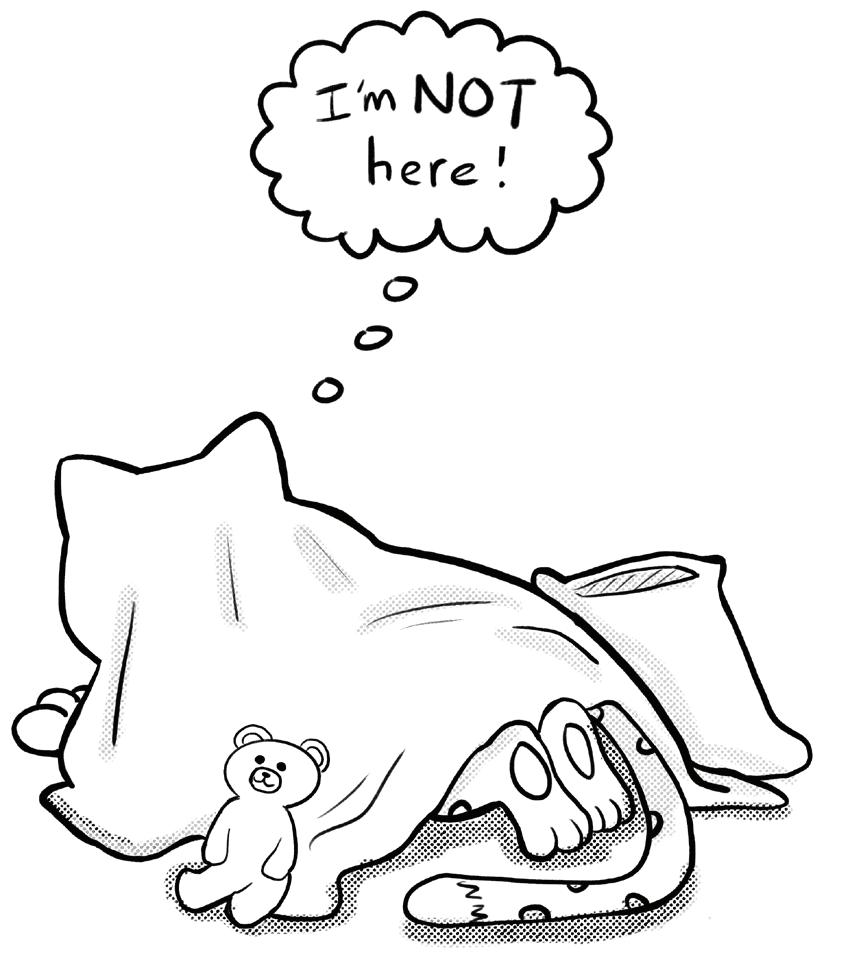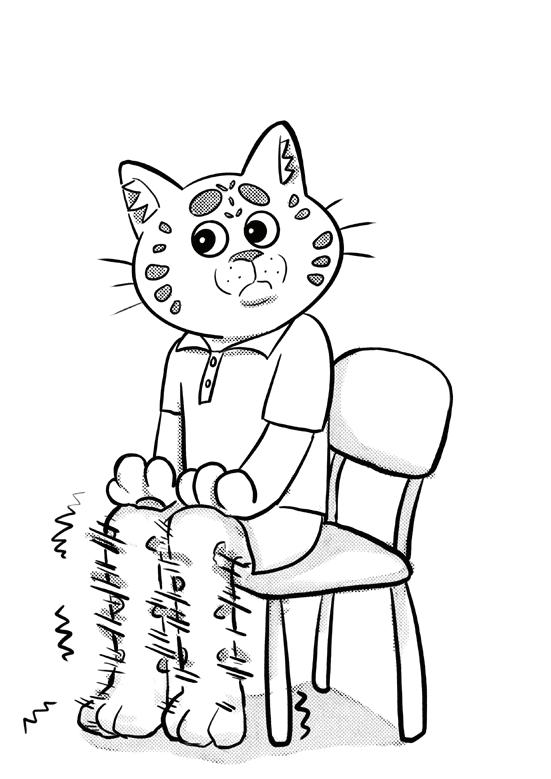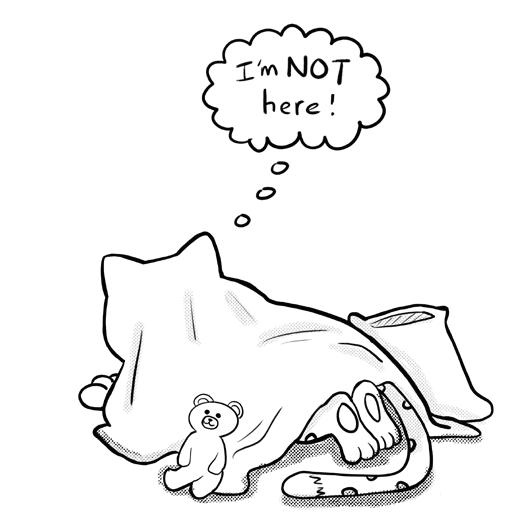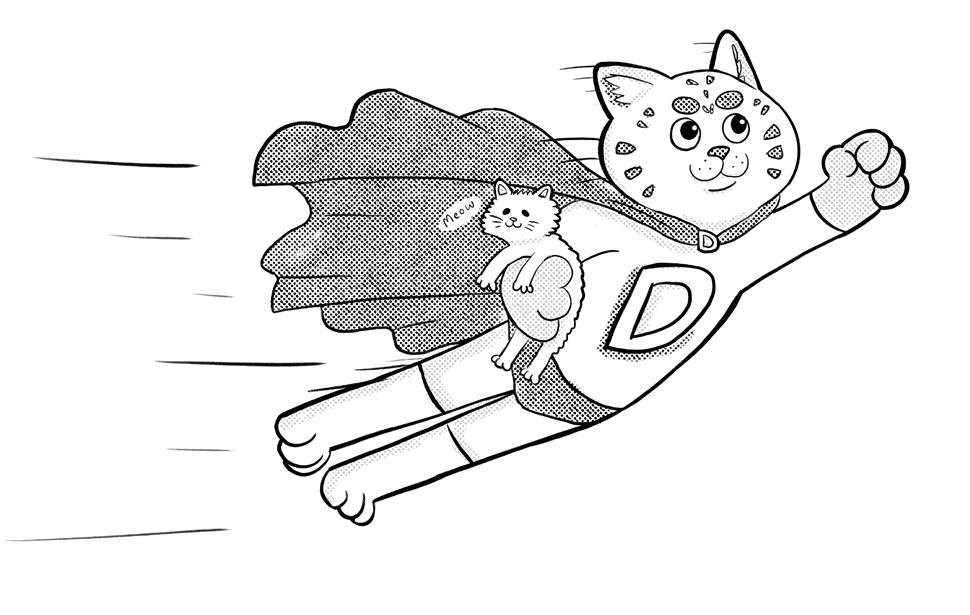Scary Stuff

How knowing God and the way he made us helps with anxiety and worry
An imprint of Anglican Youthworks
Published August 2025
Copyright © Sarah Allen 2025
This book is copyright. Apart from fair dealing for the purposes of private study, research, criticism and review as permitted under the Copyright Act, no part of this book may be reproduced by any process without the express permission of the publisher.
Unless otherwise stated, Scripture quotations taken from The Holy Bible, New International Version® NIV® Copyright © 1973, 1978, 1984, 2011 by Biblica, Inc. Used with permission. All rights reserved worldwide.
Scripture quotations marked NIrV are taken from the Holy Bible, New International Reader’s Version®, NIrV® Copyright © 1995, 1996, 1998, 2014 by Biblica, Inc.™ Used by permission of Zondervan. All rights reserved worldwide. www.zondervan.com The ‘NIrV’ and ‘New International Reader’s Version’ are trademarks registered in the United States Patent and Trademark Office by Biblica, Inc.™
An earlier version of Appendix 7 was published as ‘The comfort of the gospel to the anxious household’ by The Gospel Coalition Australia, 19 November 2024, <au.thegospelcoalition.org/article/the-comfort-ofthe-gospel-to-the-anxious-household/>.
All online materials referenced in this work were publicly available 9 May 2025.
All medical information provided in this book was written according to Australian standards of knowledge and practice at the time of publishing. It is intended as general medical information and should not be taken as specific medical advice. Individuals should consult their local medical professional for tailored medical care.
PO Box A287
Sydney South NSW 1235
Australia
P: +61 2 8268 3309
E: sales@youthworks.net
W: youthworksmedia.net
National Library of Australia
ISBN: 978-1-922866-31-8
Managing editor: Rachel Macdonald
Theological editor: Guan Un
Illustrator: Hannah Milford
Cover and internal design: Rachel Aitken
For Annie, Gil and Ziggy, and for the kids of Laneway Church, Footscray. God loves you. So do I.











Man never attains to a true self-knowledge until he has previously contemplated the face of God, and come down after such contemplation to look into himself.
—John Calvin, Institutes of the Christian Religion1

These words can be very hard to understand even for an adult. Put simply, it means that we won’t know ourselves unless we first know God. So let’s begin.
1)CalvinJ (1989), Institutesof theChristianReligion,BeveridgeH (translator), WMB Eerdmans,p.38. Youwill meet another Calvinverysoon.
2) Don’t panic: there won’t be assessments or long division in this book.
Dear Super Kid,
Welcome. This is a book about
scary
stuff
.
Now, you might be thinking, ‘Well, then I’m going to put this book down and go do something definitely not scary, like pat a bunny or make a Lego spaceport’. That’s understandable. After all, you’ve lived a few years. You know that life has lots of scary stuff and that one of the tough things about facing this is that it feels really gross. And not just gross like touching the forgotten brown banana in your lunchbox. It can feel 100% terrible, like the time your sister hid under your bed and grabbed your ankle and your whole body felt like it was plugged into a power socket. Or when you had to give a speech and wondered if your lunch would come back out instead of the words. Awful.
We use lots of words to describe that feeling, words like ‘worry’, ‘stress’, ‘anxiety’. The Bible often uses the word ‘fear’. It is an uncomfortable and uncertain feeling that something bad might happen. Sounds delightful, doesn’t it?
So why read a whole book on fear and spend time feeling worse? Here’s the thing: we’ve got a great, big, loving God who made this great, big, sometimes-scary world, and he wants us to learn stuff about it and us. This is one reason why he gives us feelings. Feelings are like teachers: they help us to learn.2 This book with scary stuff is going to teach us about ourselves and our God as we meet him in the Bible through Jesus. And the good news is that when we know God, three really good things happen:
1) Our fears shrink. They get smaller as our knowledge of God gets bigger. If your fears sometimes feel too big or you’re often afraid, be hopeful! You really can feel better.
2) Our fear of God grows. That might not sound like good news. Oh yay … more fear! We usually run away from scary stuff. But in this case, running to God is like seeking shelter in a storm. A fear of God is a good fear that keeps us secure and comforted.
3) Our love grows. Bringing our fears to God sets us free to love him and others more. We can become a help to those around us, because everyone gets scared and needs Jesus.3
3)Evenadults.Andsometimesespeciallyparents.



This book is a gift for you. It will help you to see the scary stuff of life not as being things to escape but as opportunities to grow. You can bring your fears to the Bible and get to know God. You’ll find your fears change and your love for him and others grows.
The next section is a quick guide to fear: what it is, what it feels like and how to make the most of it. There are some tips on using this book and notes for the adult doing this with you (let’s call them your coach). I suggest that you and your coach go through these pages together before you get to the good stuff, the Bible!
With love and a prayer for God to lead you to himself,
Dr Sarah
PS: You might be wondering, ‘Hang on. This is my book. What’s my coach doing here?’ Two reasons. First, it’s easier to understand our own thoughts when we say them out loud to someone we trust. So your coach is here to help you. Second, here’s a not-so-secret secret: life gets pretty scary for adults too. God has good news for them too. He wants whole families to know him so that their fears change and their love grows.
PPS: This is Calvin! Calvin, meet a super kid. Kid, meet Calvin. Calvin has bravely agreed to come on your scary-but-good journey with you.


Understanding fear
I promised no exams or maths in this book, but there is some science that will help you understand your body and feelings, and science is cool. Let’s begin by understanding where fear comes from and what it does to us. Bonus info for nerdy kids: this is called physiology.

What happens in your body when something scary happens, like when a big dog barks at you as you walk past on your way to school? Your ears tell your brain, ‘Wow. Loud sound! Possible dog alert. It’s close and it’s a biggie!’ Your clever brain says, ‘Hmm. It could be dangerous. Let’s get out of here. I’ll need a full-body co-ordinated evasive manoeuvre’ (also called ‘running away’). Your brain rings an alarm bell called your amygdala (a great nerd-word) and sends a messenger all around the rest of the body via your blood vessels to tell each part of the team what to do. You know this chemical messenger; it’s adrenaline. He’s like a PE teacher with a megaphone saying:

‘Heart, pump faster!’

‘Stomach, stop that digesting; we’ve got other work to do.’

‘Lungs, breathe harder!’

‘Legs, move it!’
You can see how this would help you to escape a scary dog! But what if you’re not meant to run or change anything? What if it’s a scary exam? Or a speech at assembly? Or your parents are coming to inspect your bedroom to see if you’ve tidied under your bed?4 Sometimes you don’t need to run anywhere—you just have to wait and feel gross. Your guts churn, your cheeks flush, your heart pounds. You suddenly need the toilet and have forgotten how to breathe.
This is what fear feels like. It’s not fun. You have probably felt like this sometime in the last day or so. And we can all give each other a mental hug right now, because this happens to every single one of us. We might use different words to describe it. Your parents might say they feel ‘stressed’, and your teenage brother might say he’s ‘totally freaking out!’ and your baby sister might just say ‘waa’. But whatever we call it, we all face scary stuff and we all feel fear.
Some people feel fear more than others. For some people it’s like the amygdala alarm switch is stuck in the ON position and they feel worried all the time. We call this an anxiety disorder, and it is quite common.5 There’s a good chance a few kids in your class experience this. Maybe someone in your family does too. The point is, fear is part of everyday life for all of us. It might affect some more than others, but no-one is ever weird or different for feeling afraid.
Stuck with such an unpleasant feeling, it’s natural to ask, ‘What can I do about it?’
You’ve got two options.
OPTION 1: AVOIDANCE

Avoidance might feel like the best option at the time. It is when we get around the uncomfortable feeling however we can, like by watching lots of TV to keep the worry out of our mind, avoiding a scary person or place, never putting your hand up in class in case you’re wrong, or refusing to try a new sport because it might be 4) How do they always know where you hid the mess? 5) See Appendix 3 ‘Anxiety disorders explained’.
too hard. Let me be clear, avoiding danger is important. We’re not talking about that. But we also tend to avoid feeling fear itself. We just don’t like the way it makes us feel.
Avoidance is a natural instinct, and we can do it without even realising. In fact, chances are we’ve probably all avoided something scary in the last day, and probably felt a bit better … for a moment.
But there’s a catch. Avoidance is like trying to keep a beach ball underwater.6 Imagine the ball is your worry and you try to push it down and out of your mind every time it floats up. You might feel less afraid, but it takes a lot of effort and leaves you drained. Pretty soon you’ll find that other things become harder, such as concentrating in class, being creative and even being kind.

So if you’ve got something scary or worrying going on, avoidance might be your first reaction. But is it your best bet? Hear both options before you choose.
OPTION 2: DISCOVERY
Discovery is about noticing you’re feeling fear, seeing it as a learning opportunity and then choosing to face it. Discovery is for everyday kids who are secretly superheroes in disguise. What happens when a superhero hears a distress call? They whip off their normal clothes and get their special costume on (you know … mask, cape, undies on the outside). When the fear-alarm goes off, discovery is like suiting up to face the villain, save the city and, because you’re that kind of hero, rescue a kitten. Go discovery!
But before you think this superhero story is over, there’s a plot twist! Fear isn’t the villain. Learning to tolerate uncomfortable feelings is a really important part of
6) Actually a fun challenge! Do try it sometime!
growing up. Remember, God gives us feelings as teachers. Facing fear can help you learn about God and yourself through the Bible. You know how parents sometimes give you something unpleasant that is actually good for you? Like bedtime, the dentist or even vegetables (tough break, hey). Well, God is a good Father who loves you. Even though fear is unpleasant to feel, what we discover through it can be good for us.
So who is the villain? Are you ready for the double plot twist? The villain is your old friend, the one who seemed like such an innocent and helpful guy. The villain is avoidance. He’s out to keep you stuck-in-the-yuck and foil your quest to heal and grow. Kid, avoidance is not your friend.
In this book you’ll put on your superhero suit (discovery) and bring your fears to the Bible. There we will discover God and let him speak to us to help our fears change and our love grow.

How to use this book
The rest of this book is in two parts:
1) Bible studies: These will help you bring your fears to God and discover more about him. In between the Bible studies are Brain train sessions that reinforce and apply what you’re discovering. These often use elements of psychology (more cool science!) that help shape our thinking and strengthen our minds.
2) Appendices: This is some bonus information on a few topics that may come up as you go through the book. These are written for the coach and other adults. Kid, there are a few big words here, but no-one is stopping you from reading over their shoulder.
The Bible studies have been designed in the following way:
· To be done in order—though you may like to return to certain ones again and again as things come up in life.
· To be done as a pair—that’s you (the super kid who owns this book) and your adult coach. Coaches may like to have a quick read of ‘Notes for the coach’ on the following page.
· To be done in conversation—sometimes reading out loud and writing things down can be helpful. Go ahead if you love that stuff. The space is there if you’d like to write your thoughts, but that might be the last thing you’d like to do after a tiring and scary day. It’s not time for handwriting practice. The important thing is the conversation.
· To be done over time—you may like to set aside one evening a week (maybe you’ll be allowed to stay up late!). This allows what you’re learning to be recalled and discussed slowly over the days in between studies so that it sticks.

Notes for the coach
Kid, please pass the book to your coach for a minute so they can read some helpful tips on how to support you and make the most of this time together.
DO IT TOGETHER
One of the goals for this book is that you and your child grow together as you work through the studies. Think of it as an ongoing conversation between you that, God willing, continues for decades to come. If you have multiple children in your life, it is still best to give your attention to one child at a time. So, as much as possible, carve out the time and sit down with them individually and with nothing else in front of you. When you finish a study, plan a time for the next one so you can both look forward to it.
ONE STUDY AND BRAIN TRAIN A WEEK IS A GOOD GOAL
Aim to together do one study a week (either in one sitting or in two smaller slots if that suits your child better). Recall the stories at other times and in other contexts to consolidate what you learn and to integrate it into everyday family life. The Brain train sessions are designed for your child to attempt on their own at some other point in the week, with a quick check-in with you at the end for a recap and prayer. It will be good for you to keep these in-between sessions in mind, prompt them when a good opportunity to do it comes up, and show initiative and curiosity in having a follow-up conversation afterwards.
PICK YOUR MOMENTS
We all know the hit-and-miss nature of trying to connect with kids. Some moments just don’t work. If it’s not the right time for deep work, offer a moment of warm connection and reschedule. Each study also has a ‘stretch break’, so if there have been many useful sidetracks that needed time, or too many yawns or distractions, pause for a short time or otherwise finish early and put the second half into the diary. It is better to pause on a high note than create a draining experience for you both.
